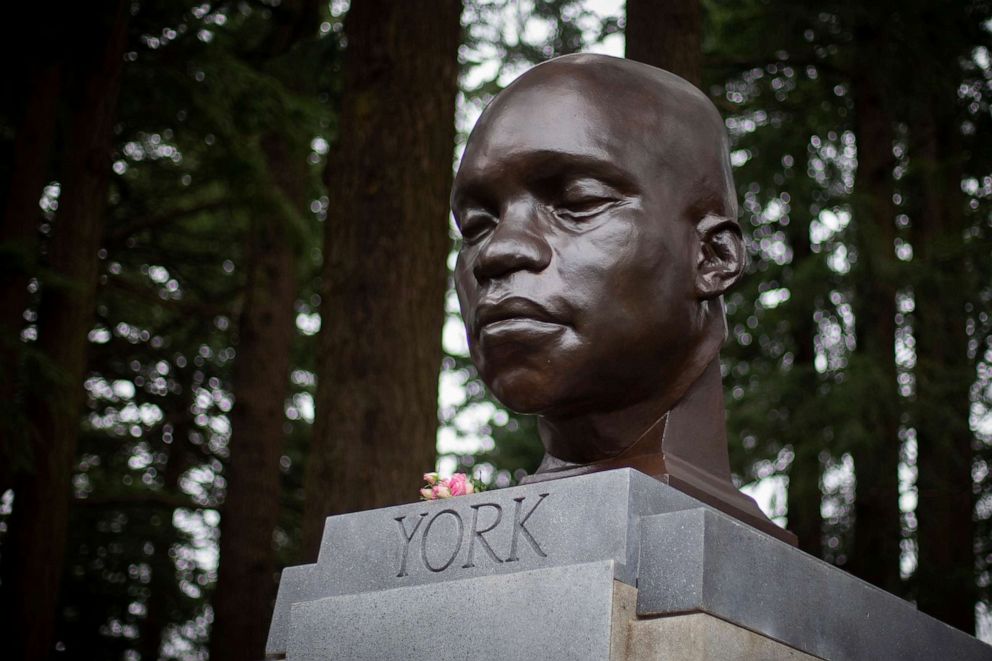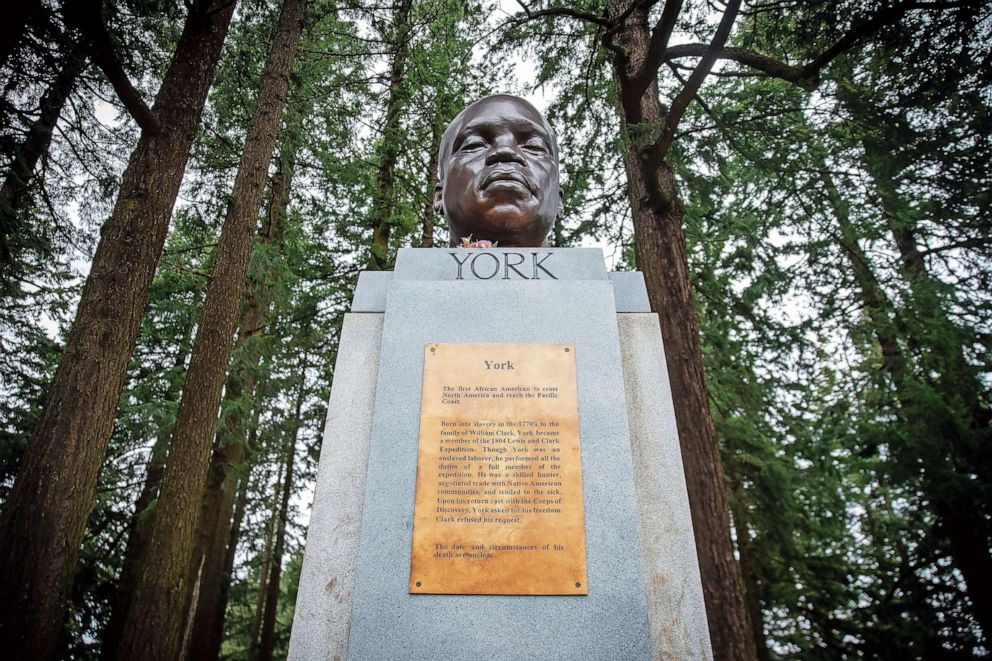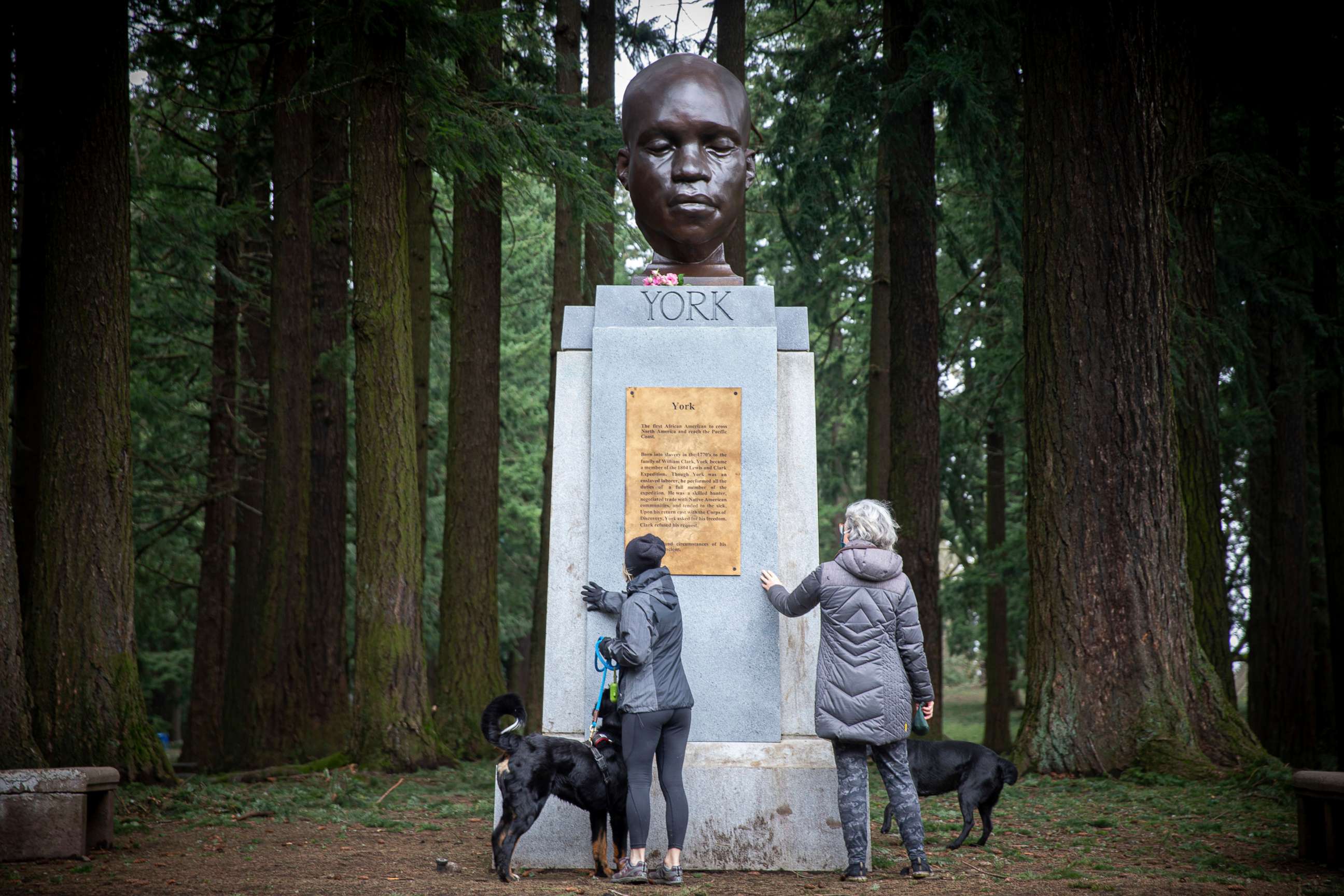Bust of York, an enslaved Black member of the Lewis and Clark expedition, appears in Portland
York is described as “the first African American to cross North America."
A memorial bust of York, a Black slave who was part of the Lewis and Clark expedition, has appeared in Portland.
The artwork emerged in Mount Tabor Park on Saturday, in the same place where a statue of Harvey Scott, a well-known conservative figure who opposed women’s suffrage, was toppled in October 2020.
Statues of George Washington, Abraham Lincoln and Thomas Jefferson were also toppled in Portland last fall during protests decrying racism.
York was enslaved by William Clark, who, along with Meriwether Lewis, led the expedition to cross into the newly acquired western part of the country following the Louisiana Purchase in 1803.
It’s not clear who created the bust of York or who placed it on a park pedestal.

The piece “should make all of us reflect on the invisibility and contributions of Black, Indigenous, Latinx and other Oregonians of color—especially artists,” Carmen Rubio, the city’s commissioner, said in a statement on Facebook.
She added that the bust is a “much-needed reminder to city leaders to hasten our work of rooting out white supremacy in our institutions.”
Adena Long, director of Portland Parks & Recreation, said the piece was a "complete surprise" to the department.
"The bust is really impressive and it has brought this important story to light for many Portlanders and people across the country," she said in a statement.
The work depicts York as bald, with his eyes directed downward. Historians say there is no contemporary illustration of York.
A plaque under the bust describes York as “the first African American to cross North America and reach the Pacific Coast.”

Portland Parks & Recreation officials told ABC News they have inspected the piece and deemed it safe. It will remain up as long as it's secure.
According to park policy, tributes are allowed to remain in parks as long as they’re not a danger to the public.
York has appeared in public art before.
His image was painted on the facade of the Sovereign Hotel in Portland, which depicts the Lewis and Clark Expedition members.

At Lewis and Clark College, York is memorialized in the form of a six-foot-tall bronze statue on the campus.
A statue of York also stands at the Lewis & Clark National Historical Park in Louisville, Kentucky.




